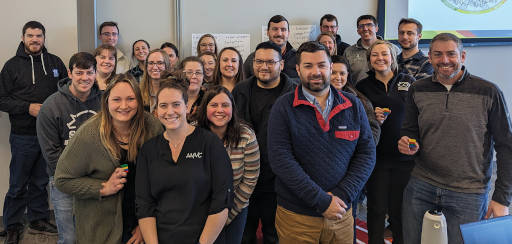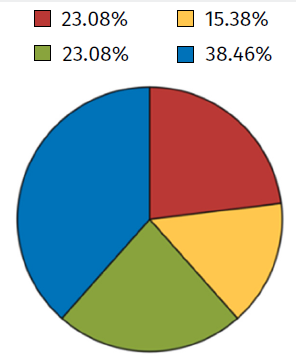Last fall, AASV was announced as a recipient of a $202,548 Education, Extension, and Training grant from the US Department of Agriculture National Institute of Food and Agriculture Veterinary Service Grants Program to create and deliver a participant-led, early-career swine veterinarian development program. These awards are intended to help mitigate food-animal veterinary service shortages in the United States. After the AASV Early Career Committee identified the need for additional education and training for swine veterinarians early in their careers, they quickly formed a subcommittee to develop a plan and a program to do just that.1
The goal is to create a participant-led program to provide resources needed to encourage and ensure successful, lifelong careers as swine veterinarians and to cultivate new leaders in swine veterinary medicine. Facilitated by Dr Clayton Johnson, AASV’s program will deliver coursework and training through 5 in-person educational modules to be held April 2023 through July 2024 and a half-day, early-career conference in fall 2024.
The participants met for the first time during Module 1, held April 5-6 at the Iowa State University (ISU) Research Park in Ames, Iowa. Of the 25 participants, 23 attended in person and 2 attended virtually.
As requested by the AASV Board of Directors, the first module covered communications training. With support from Elanco Animal Health, Dr Heidi Hulon presented Insights Discovery. According to Insights, “The Insights Discovery methodology uses a simple and memorable four-color model to help people understand their style, their strengths, and the value they bring to the team.” Consistent with the goals for the first module, Insights Discovery is designed to “help people understand themselves, understand others, and make the most of the relationships that affect them in the workplace.”2
Participants completed an assessment prior to meeting in Ames, but first learned their “color energies” during Module 1. They spent Wednesday afternoon and Thursday morning engaged in group activities to better learn how to identify their own communication preferences, identify communication preferences of others, and practice new skills.

Those with a Cool Blue color energy are often task-focused, calm under pressure, and are thoughtful and objective. Their Insights colorful statement is, “Let’s do it right.” Those with a Fiery Red color energy generally enjoy high activity, working with others, and focusing on facts. Their Insights colorful statement is, “Let’s do it now.” Those with a Sunshine Yellow energy seem sociable, considerate of others, action-oriented, and entertaining. Their Insights colorful statement is, “Let’s do it together.” Finally, those with an Earth Green color energy prefer depth in relationships, harmony, and a consensus of all involved. Their Insights colorful statement is, “Let’s do it with care.”3
This group of swine veterinarians was divided almost equally among all four colors, although Cool Blue dominated (Figure 1). Most veterinary audiences, representing all species, are predominantly Earth Green.

In addition to educational content, a key outcome of this program is a strong peer network. To amplify the development of those relationships, each module includes an in-person social event. Participants, program facilitators, and speakers enjoyed each other’s company during a casual meal and bowling at Perfect Games, conveniently located next to the group’s hotel.
Finally, the group was invited to attend the ISU Swine Debate Club on Thursday at noon. The participants who were able to stay in Ames a bit longer were treated to lunch provided by the club. Attendees heard about continued improvements in oral fluid sampling from Dr Grzegorz Tarasiuk and an update on the US Swine Health Improvement Plan (US SHIP) and the ISU Veterinary Diagnostic Laboratory construction from Dr Rodger Main.
Almost all participants agreed this module made them more aware of personal communication preferences, helped them understand how to communicate with individuals with a different communication preference, and improved their ability to think about intentional communication and innate tendencies. All participants said they would recommend this module to other early-career swine veterinarians.
Future modules will cover topics selected by participants and take place in different geographic regions. View a list of participants at aasv.org/news/story.php?id=15663.
This is one example of the great work committees undertake to provide benefits to all AASV members. If you are interested in learning more about committee activities or are considering joining a committee, please contact the AASV office at aasv@aasv.org.
Abbey Canon, DVM, MPH, DACVPM
Director of Public Health and Communications

References
*1. AASV News. USDA-NIFA grant supports AASV’s participant-led, early-career swine veterinarian development program [editorial]. J Swine Health Prod. 2022;30(6):371.
*2. Insights Discovery. The Insights Group Limited. Accessed May 2023. https://www.insights.com/us/products/insights-discovery
*3. The Insights Group Ltd. Insights Discovery mini reference guide. 2013-2020.
* Non-refereed references.
